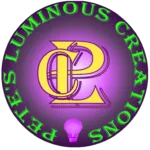Table of Contents
Different Types of UV Light Bulbs and LED Strips
When venturing into the world of UV lighting, it’s important to understand the differences between the types of UV light bulbs and LED strips available. Each type serves its specific purpose, especially when you’re working with glow in the dark items or UV light reactive products. By understanding these differences, you can better choose the right source to meet your needs.
The three primary types of UV lighting are UVA, UVB, and UVC. Though all these categories belong to the ultraviolet spectrum, they differ significantly in their wavelength, which influences their practical applications. For your glow in the dark projects, UVA lighting is where you should focus your attention.
UVA – Long Wave
UVA light, also referred to as long-wave UV, has a wavelength range of 320 to 400 nanometers. This type of UV light is not only effective in charging phosphorescent materials that glow in the dark, but it is also widely used in various applications such as skin tanning, curing inks and adhesives, and even in detecting counterfeit currency. When you expose your glow in the dark items to UVA light, you activate the phosphorescent particles within them, allowing them to absorb energy during the exposure and emit that energy in the form of a beautiful glow once the light source is removed.
UVB – Medium Wave
In the context of UVB light, which operates within the 280 to 320 nanometers range, its purpose leans more towards promoting vitamin D synthesis in the skin. While UVB provides some benefits, such as triggering tanning, it is generally less relevant for your glow in the dark applications. UVB light can also be more harmful to the skin, so if your primary interest is enhancing glow-in-the-dark effects, you won’t need to concern yourself with this type.
UVC Short Wave
UVC lighting, with wavelengths between 100 to 280 nanometers, serves a very different purpose. Primarily, it is used for germicidal applications, where UVC bulbs are employed to disinfect water, air, and surfaces. This type of UV light is effective in killing microorganisms, but it doesn’t have applications when it comes to glow in the dark products, and it’s important to approach it with caution, as UVC can be harmful to human skin and eyes.
For your projects, consider exploring the variety of UVA bulbs and LED strips available on the market. You can find fluorescent tubes, compact fluorescent lamps (CFLs), and various LED options designed specifically for UVA output. LED strips are particularly versatile, allowing you to create dynamic lighting effects that can enhance the appearance of elements reactive to UV light. Integrating these strips into your decor or crafting projects can elevate your glow in the dark items to a new level.
When all is said and done, when selecting UV light sources, understanding the differences among UVA, UVB, and UVC will help you make informed decisions tailored to your specific interests. By focusing on UVA lighting, you can efficiently charge glow in the dark materials, ensuring they shine brightly in your intended applications. Whether for creative projects or simply to enhance your space, the right UV lighting will transform your encounters with glow in the dark and UV reactive products.
UVALong wave |
 |
Safe for general use.
Used to detect counterfeit notes. Also used to charge up Glow and UV products. Buy UV Light Bulb |
UVBMedium wave |
 |
Mixture of UVA and UVB
Can be found in tanning beds. |
UVCShort wave |
 |
Produces dangerous rays
Clear tubes used for germicidal applications and UV curing in offset printing. |
UV In Our Atmosphere
Our atmosphere blocks out harmful high-energy radiation like x-rays, gamma rays and most of the ultraviolet rays. The atmosphere also absorbs most of the infrared radiation which reaches the Earth from space. On the other end, the atmosphere blocks most UVC rays and reduces the amount of UVB rays which reach the surface, while allowing UVA rays to filter through.
Video
The video below explains more in detail about the different UV tubes and also gives a demonstration of each.
